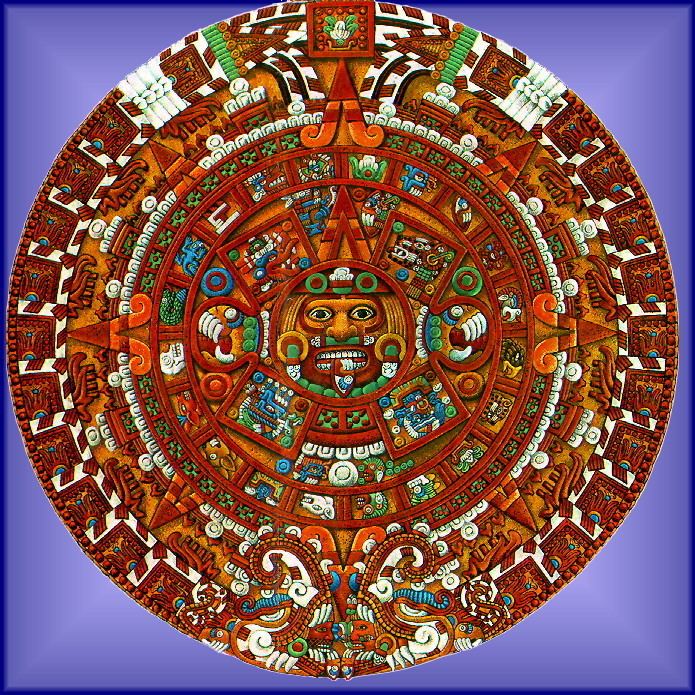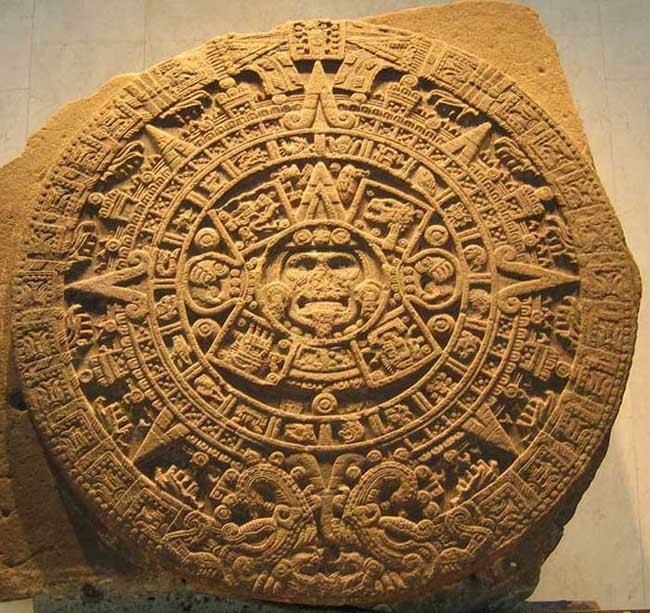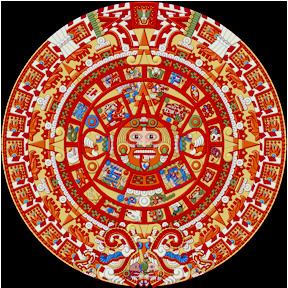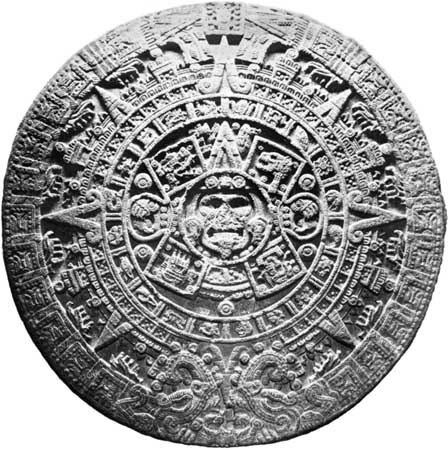 | ||
Mazatzin reveals truths of the aztec calendar
The Aztec calendar is the calendar system that was used by the Aztecs as well as other Pre-Columbian peoples of central Mexico. It is one of the Mesoamerican calendars, sharing the basic structure of calendars from throughout ancient Mesoamerica.
Contents
- Mazatzin reveals truths of the aztec calendar
- How to draw the aztec calendar
- Tonalpohualli
- Day signs
- Trecenas
- Veintena twenty metzli moon
- Reconstruction of the Solar Calendar
- References

The calendar consisted of a 365-day calendar cycle called xiuhpohualli (year count) and a 260-day ritual cycle called tonalpohualli (day count). These two cycles together formed a 52-year "century," sometimes called the "calendar round". The xiuhpohualli is considered to be the agricultural calendar, since it is based on the sun, and the tonalpohualli is considered to be the sacred calendar.

How to draw the aztec calendar
Tonalpohualli

The tonalpohualli ("day count") consists of a cycle of 260 days, each day signified by a combination of a number from 1 to 13, and one of the twenty day signs. With each new day, both the number and day sign would be incremented: 1 Crocodile is followed by 2 Wind, 3 House, 4 Lizard, and so forth up to 13 Reed, after which the cycle of numbers would restart (though the twenty day signs had not yet been exhausted) resulting in 1 Jaguar, 2 Eagle, and so on, as the days immediately following 13 Reed. This cycle of number and day signs would continue similarly until the 20th week, which would start on 1 Rabbit, and end on 13 Flower. It would take a full 260 days (13×20) for the two cycles (of twenty day signs, and thirteen numbers) to realign and repeat the sequence back on 1 Crocodile.
Day signs

The set of day signs used in central Mexico is identical to that used by Mixtecs, and to a lesser degree similar to those of other Mesoamerican calendars. Each of the day signs also bears an association with one of the four cardinal directions.

There is some variation in the way the day signs were drawn or carved. Those here were taken from the Codex Magliabechiano.
Wind and Rain are represented by images of their associated gods, Ehecatl and Tlaloc (respectively).
Other marks on the stone showed the current world and also the worlds before this one. Each world was called a sun, and each sun had its own species of inhabitants. The Aztecs believed that they were in the fifth sun and like all of the suns before them they would also eventually perish due to their own imperfections. Every fifty two years was marked out because they believed that fifty two years was a life cycle and at the end of any given life cycle the gods could take away all that they have and destroy the world.
Trecenas
The 260 days of the sacred calendar were grouped into twenty periods of thirteen days each. Scholars usually refer to these thirteen-day "weeks" as trecenas, using a Spanish term derived from trece "thirteen" (just as the Spanish term docena "dozen" is derived from doce "twelve"). The original Nahuatl term is not known.
Each trecena is named according to the calendar date of the first day of the thirteen days in that trecena. In addition, each of the twenty trecenas in the 260-day cycle had its own tutelary deity:
Veintena (twenty); metzli (moon)
"In ancient times the year was composed of eighteen months, and thus it was observed by the native people. Since their months were made of no more than twenty days, these were all the days contained in a month, because they were not guided by the moon but by the days; therefore, the year had eighteen months. The days of the year were counted twenty by twenty." Diego Durán
Xiuhpohualli is the Aztec year (xihuitl) count (pohualli). One year consists of 360 named days and 5 nameless (nemontemi). These 'extra' days are thought to be unlucky. The year was broken into 18 periods of twenty days each, sometimes compared to the Julian month. The Aztec word for moon is metztli but whatever name was used for these periods is unknown. Through Spanish usage, the 20-day period of the Aztec calendar has become commonly known as a veintena.
Each 20-day period started on Cipactli (Crocodile) for which a festival was held. The eighteen veintena are listed below. The dates are from early eyewitnesses. Each wrote what they saw. Bernardino de Sahagún's date precedes the observations of Diego Durán by several decades and is believed to be more recent to the surrender. Both are shown to emphasize the fact that the beginning of the Native new year became non-uniform as a result of an absence of the unifying force of Tenochtitlan after the Mexica defeat.
Reconstruction of the Solar Calendar
For many centuries scholars had tried to reconstruct the Calendar. The latest and more accepted version was proposed by professor Rafael Tena (INAH), based on the studies of Sahagún and Alfonso Caso (UNAM). His correlation confirms that the first day of the mexica year was February 13 of the old Julian calendar or February 23 of the current Gregorian calendar. Using the same count, it has been verified the date of the birth of Huitzilopochtli, the end of the year and a cycle or "Tie of the Years," and the New Fire Ceremony, day-sign "1 Tecpatl" of the year "2 Acatl," corresponding to the date February 22nd.
